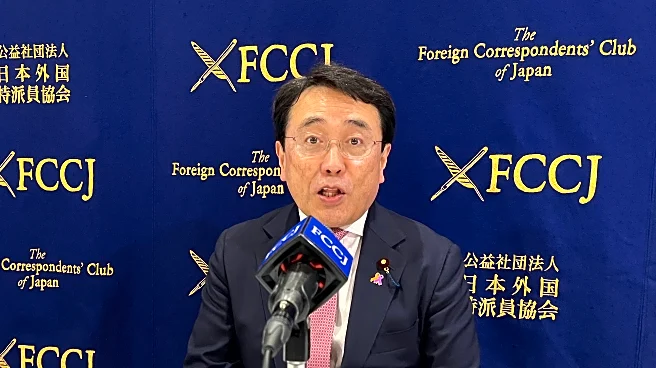What's Happening?
CatalYm has announced the commencement of a Phase 2b clinical trial for its monoclonal antibody, visugromab, in combination with chemoimmunotherapy for patients with newly diagnosed metastatic non-squamous non-small cell lung cancer (NSQ mNSCLC). The trial, named GDFATHER-NSCLC-01, aims to evaluate the efficacy and safety of visugromab, which targets Growth Differentiation Factor-15 (GDF-15), a cytokine that contributes to immune suppression and resistance to immunotherapy. The trial will enroll approximately 107 patients across the US, EU, and Switzerland, with the primary endpoint being the objective response rate. Visugromab has previously shown promise in earlier trials, demonstrating deep and durable responses in solid tumors and potential benefits in mitigating cancer cachexia.
Why It's Important?
This trial is significant as it addresses the high unmet need in treating non-squamous NSCLC, a major cause of cancer-related mortality. Current treatments often face challenges due to primary or acquired resistance to immunotherapy, affecting a large percentage of patients. Visugromab's ability to neutralize GDF-15 could potentially overcome these resistance mechanisms, offering a new therapeutic option. Success in this trial could lead to improved survival rates and quality of life for patients, as well as extend the duration of effective treatment. The trial's outcomes could also influence future cancer treatment protocols and encourage further research into GDF-15 as a therapeutic target.
What's Next?
The trial will proceed with an initial non-randomized safety run-in phase, followed by a randomized part. Key secondary endpoints include duration of response, progression-free survival, and overall survival. Results from this trial could pave the way for broader applications of visugromab in other cancer types and settings. Additionally, CatalYm plans to explore visugromab's potential in other Phase 2b studies, including those focused on cancer cachexia. The outcomes of these trials could significantly impact the landscape of cancer treatment, particularly for patients with limited options due to resistance to existing therapies.











